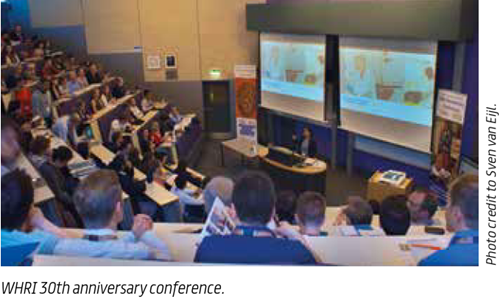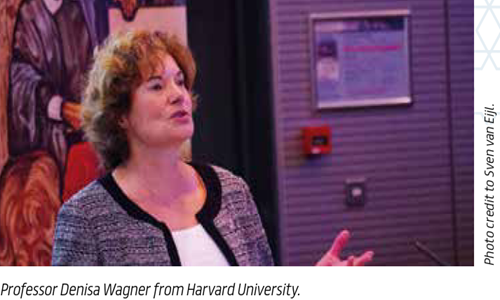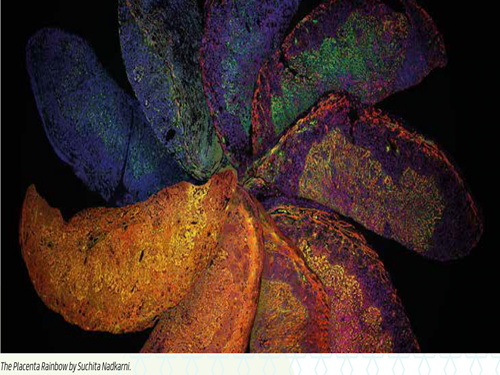Published: 23 Nov 2016
Category:
In December 2015 the William Harvey Research Institute (WHRI) at Queen Mary University of London received a major recognition from the British Pharmacological Society: the UK Pharmacology on the Map award was presented to the WHRI for its outstanding contribution to the discovery and development of medicines. The award celebrates research institutes and sites of importance, linked to particularly significant achievements in the discipline of pharmacology. The 2015 awardees of the were the Department of Pharmacology in the University of Oxford, The Institute of Cancer Research, The Frythe, and the William Harvey Research Institute.
The Institute, based near Barbican in Central London, was founded in in 1986 by Nobel Laureate Sir John Vane, whose ground-breaking work on the mechanism of action of aspirin fathered research into the roles lipids play during inflammation. To commemorate this 30-year heritage, the WHRI held a 2-day celebratory conference over 22 and 23 June 2016, both acknowledging its past pharmacology achievements and exhibiting its ongoing research activities.

The conference, which took place at the Institute’s picturesque Charterhouse Square site, was joined by internationally acclaimed researchers including WHRI alumni and former friends and colleagues of John Vane: Professors Daniela Salvemini,Rod Flower, Jane Mitchell and Bengt Samuelsson, and collaborators and friends of the Institute: Professors Charles Serhan, Robert Lefkowitz and Denisa Wagner.
The first John Vane Symposium session was opened by an engaging talk from Professor Daniela Salvemini of Saint Louis University, on novel therapeutic targets in the treatment of chronic neuropathic pain. Professor Salvemini, who carried out her PhD and first post-doctoral position at the WHRI with John Vane between 1987 and 1992, presented data demonstrating the analgesic effect of A3 adenosine agonists, which circumvent the hyperalgesia and antinociception associated with opioids. The session saw talks from two more of John Vane’s PhD graduates, Professor Jane Mitchell from Imperial College London (who spoke about cyclo-oxygenase 2 and its role in cardiovascular health) and one of WHRI’s current centre leads, Professor Chris Thiemermann (who gave a fond and humorous history of his time with John Vane, and discussed how the antimalarial drug artesunate showed promising efficacy in reducing organ failure following experimental haemorrhagic shock).
This first session was closed by Professor Charles Serhan from Harvard University, who is a long-time collaborator and mentor to several WHRI researchers and who is widely regarded as the “father of pro-resolving lipid mediators” and the newly coined pharmacological sub discipline called ‘resolution pharmacology’. Professor Serhan shared an exciting storyline of data, demonstrating the structural elucidation of lipid mediators which stimulate bacterial clearance and tissue repair.
Annually at its Institute-wide conferences, the WHRI awards its own John Vane Medal to a recipient who has made an outstanding contribution to pharmacology throughout their career. At this year’s celebration, the medal was awarded to Prof. Bengt Samuelsson from the Karolinska Institutet, who shared the Nobel Prize with John Vane and Sune Bergström in 1982. After his entertaining talk on the evolution of the arachidonic acid cascade, the medal was presented, as per WHRI tradition, by Lady Elizabeth Vane who remarked that they had often danced together at formal gatherings.
The second day of the conference was dedicated to showing off the young researcher talent within the Institute. The content showcased the interdisciplinary nature of the WHRI, with talks ranging from the role of ubiquitination in autoimmunity, causative mutations in delayed puberty, organ-selective immunosuppression and the in-house development of a novel therapy for age-related macular degeneration. The final guest speakers for the day were Professor Robert Lefkowitz from Duke University, and Professor Denisa Wagner from Harvard University. Professor Lefkowitz’s talk simply entitled “G protein-coupled receptors” was a fascinating history of the storyof his Nobel Prize-winning work, which elucidated the structural and functional characteristics of GPCRs. His memorable lecture covered the period when the term “receptor”was an abstract concept used to explain agonism in the presence of an agonist, through to the first cloning of the â-adrenergic receptor, the demonstration of G protein and arrestin-mediated signalling and receptor recycling, and the more recent concept of biased agonism. These topics now form a major component of any pharmacology degree, and so after his talk Professor Lefkowitz was awarded the WHRI Outstanding Contribution to Science Medal.

Professor Wagner, who has published extensively on thrombosis and its interplay with other inflammatory processes, gave a talk on her more recent work into the role of neutrophil extracellular traps (NETs). Despite her work being a newly explored area of neutrophil biology, Professor Wagner presented a wealth of data demonstrating a plausible role for NETs in aging, cancer, deep vein thrombosis, diabetes and cardiac fibrosis. In recognition of the impact her work has had on the field of inflammation and also on the work she conducted at the WHRI, Prof. Wagner was awarded the William Harvey Medal.
As the Institute believes strongly in investing in young researchers, the day of talks was concluded by awarding several prizes. Prizes for the best poster were awarded to Joanne Smith (for her work on the role of metabolic stress on T cell differentiation), Jianmin Chen (for her work in cardiac dysfunction) and Giulia de Rossi (for her work on the role of syndecan-4 in VEGF-induced angiogenesis), and the Best Young Investigator Award was given to myself (for our work on the role of vesicles in inflammation resolution).

The winner of the Art of Science competition, which challenged young researchers to submit piecesof scientific artwork, was awarded to Suchita Nadkarni for her stunning image of mouse placenta sections, arranged into the petals of a flower.
Once the formal conference had concluded, the evening was reserved for celebrating, and the Institute did so the only way pharmacologists know how – with good food, great drink, live music and bad dancing!
Comments
If you are a British Pharmacological Society member, please
sign in to post comments.